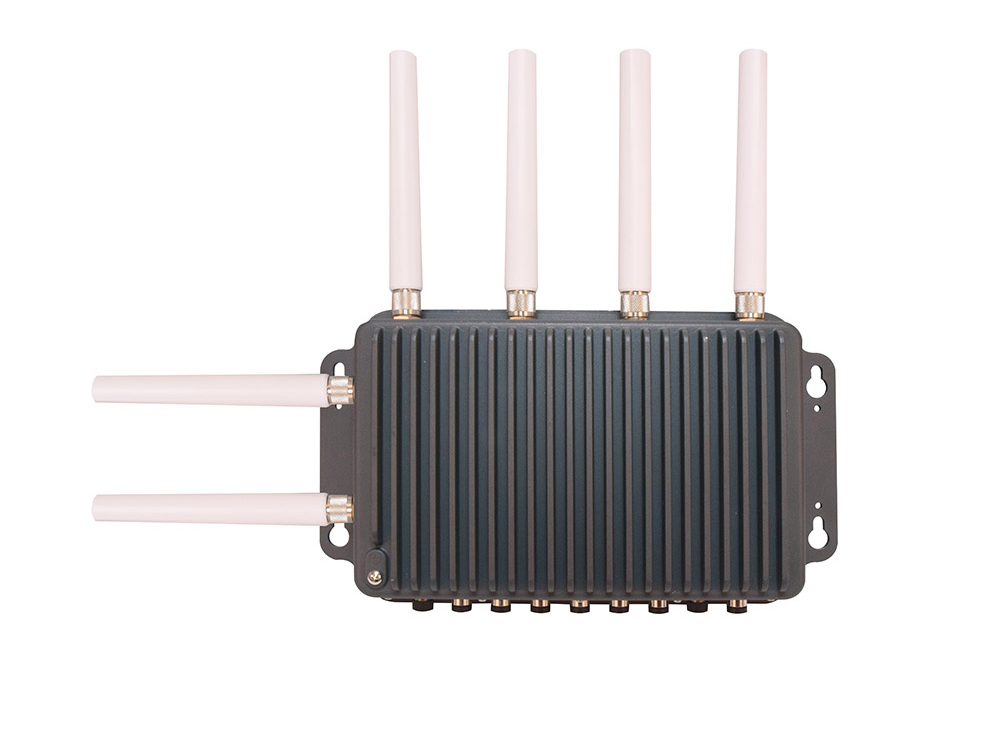The majority of IoT/IIoTs deployed in smart cities generate large sets of data, which can be perfect for many applications.
But, to turn this data into something meaningful, it needs to be processed and delivered on time. A smart’s city traffic monitoring system, for example, uses sets of IoT sensors and video cameras to collect field data, and then a remote high-end server or human agent to perform data analytics. In this case, data processed in real-time can be used to proactively monitor and quickly identify potential traffic congestion or to provide security surveillance.
Smart city projects can integrate a wide number of newly available endpoints from IoT, IIoT, sensors, video cameras, monitors, or actuators at the network edge or branch office, and collect a massive amount of rich data. But what is the value of this data, if it can’t be transported when needed?
Traditional WANs in Smart City Applications
Most large-scale smart city applications are leveraging existing Wide Area Networks (WAN) to connect these IoT/IIoT endpoints deployed across large geographic areas. One of the most popular mediums for connecting WAN includes the Internet and VPNs. Although these endpoints need to be deployed across key geographical locations, oftentimes they lack reliable and available Internet access.
This is where WAN would fit, as it can provide the necessary protocols and techniques to connect these endpoints across cities, states, and even countries. Unfortunately, the backend WAN infrastructure supporting IoT communications is still very rigid. For example, when MPLS is used in cities to interconnect geographically distributed IoTs, it can quickly be overwhelmed by the vast amount of endpoints and data.
A simple smart street lamp may generate some data about its lightning and sensing status, and probably also help with weather reports, and send information back with wired WAN technology. But an entire highway filled with street lamps generating data can make the approach a bit more challenging.
Re-adjusting MPLS to scale the new data demand will entail higher costs and provisioning time.
The Need for Preparing Data at the Edge
Having more raw data is like having more crude oil. For example, a gas station getting tons of crude oil would need to spend more on storage and transportation, but wouldn't be capable of serving crude oil to vehicles. This is why oil refineries are close to oil production sites. The same as data. It is wonderful to have more data, and sensors that generate it, but without a “data refinery,” any unprepared system will be quickly overwhelmed. To turn data into a useful commodity, it must also be cleaned up, correlated, aggregated, organized, and sent for “consumption” — on time.
Integrating and aggregating all the data generated by devices at the edge, will ultimately reduce the network latency and the need for more bandwidth. Why use the precious network resources to send redundant and raw data, if it could be processed on-site?
With the right networking infrastructure and edge computing, smart city applications like the traffic monitoring system would benefit from the data collected by such endpoints. The data can be transported and processed on time.
How Can Edge Computing Stretch the Limits of SD-WAN?
Although edge computing could improve legacy WAN communications by making it faster, when combining it with Software-Defined WAN (SD-WAN), it can provide other parallel benefits.
For example, SD-WAN can be key to leverage different network access technologies including MPLS, Internet broadband access such as 5G, Wifi 6, VPNs, and even satellite; all to improve the network reliability and availability of smart city outdoor applications. SD-WAN can be the key to bridging those isolated network endpoints.
Rather than replacing the current WAN infrastructure entirely, cities can leverage the programmability nature of SD-WAN. This technology can interconnect their branches with headquarters more efficiently, intelligently, and securely. Cities can use a combination of cellular networks, the Internet, or MPLS, to connect the SD-WAN edge at a remote branch office with the headquarters.
SD-WAN can improve IoT and IIoT-based applications by:
- Providing real-time network visibility.
- Centralized network management.
- Adaptable network capacity and availability.
- Enhanced security with network segmentation.
How Can Modernized Wireless Gateways Bring Us One Step Closer?
State-of-the-art wireless technologies such as 5G and Wifi6 could also benefit from edge computing. Although 5G, as per 3GPP specification, could increase by up to x10 the speed of existing 4G communications, in reality, it would also rely on edge computing to dramatically reduce the network latency.
Empowered by edge computing, both wireless technologies can provide the right data rate and network capacity for bandwidth-demanding applications. And when it comes to SD-WAN, they can also be used to improve the availability and reliability of the network coverage.
Withstanding the Outdoors
Deploying technology in remote, unnamed places can be quite challenging, not only because of network coverage and speed but also because of the potentially harsh environments.
The electrical equipment deployed in these outdoor city applications must be protected by mechanical casings and enclosures with a certain degree of protection against dust and water, and must also be capable of operating in harsh conditions like high or low temperatures.
An outdoor SD-WAN can benefit from the evolution of certain ruggedization certifications and standards. For example:
The International Protection Code (IP Code) refers to the specification of how an electrical enclosure can protect the inner electrical components of a device. For example, the IP 67 compliance ensures that a device is 100% protected from small solids like sand and dust, and also that it has been tested to work under extremely watery conditions.
The MIL-STD-810G is a military standard that stress-tests electrical equipment, through extreme temperatures, vibration, shock, humidity, low pressure, and more.
An example of such a wireless gateway is Lanner’s ISD-O370, an Industrial ip67-compliant ruggedized gateway with fanless wide temperature and with the MIL-STD-810G standard. This appliance is capable of operating under 40~70°C temperature and 5~90% humidity (RH). Additionally, it comes with two GbE PoE+ ports to feed power where access to electricity can be challenging.




